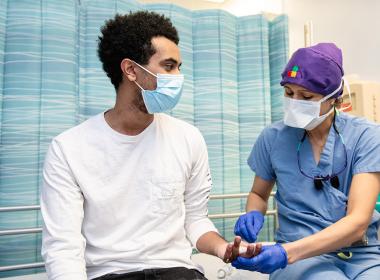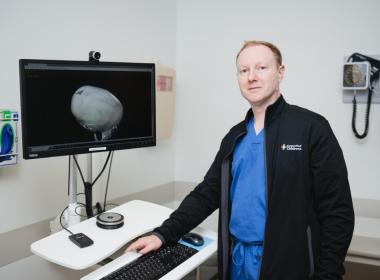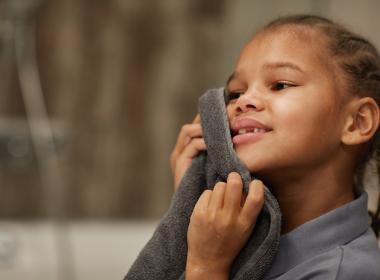Article
24 Questions for Your Teen to Ask Their Doctor
By Lauren K. Ayr-Volta, PhD:
By the time your child enters their teenage years, they should be getting ready to take charge of their own health. The more confident they feel speaking up at doctor’s visits, the better. It gives their doctor more information to support them through adolescence – and sets your

Advanced Practice Provider Excellence Award
In 2021, the Office of Advanced Practice Providers (OAPP) established the annual APP Excellence Awards. The three awards recognize select APPs for exemplary demonstration of Connecticut Children’s values in their clinical practice and interaction with patients and team members
Suspected Nephrolithiasis Clinical Pathway
Studies have demonstrated an increasing incidence of pediatric stone disease over the past 20 years. In addition, there has been a shift to outpatient care of patients with nephrolithiasis, particularly to the Emergency Department setting. Despite published national guidelines
Marketing Landing Page
PAS 2025 CONFERENCE
Oncology Patient with Fever Clinical Pathway
Cancer patients undergoing chemotherapy are at high risk of infection due to a multitude of factors including their underlying disease process, the presence of central lines, and chemotherapy induced neutropenia and immunosuppression. Infection is subsequently a major cause of
Ovarian Torsion Clinical Pathway
Ovarian torsion is the complete or partial rotation of the ovary on its pedicle, leading to ischemia and potential loss of the ovary. Early diagnosis can be challenging as ovarian torsion accounts for only 3% of acute abdominal pain in females, and can mimic other more common
Septic Shock Clinical Pathway
Sepsis is a leading cause of death among children. Survivors of sepsis may have long term sequelae. The World Health Organization calls for improvement in prevention, diagnosis, and management of sepsis. In 2024, the Society of Critical Care Medicine (SCCM) compiled new criteria
Peripheral Venous Access Clinical Pathway
Peripheral venous access is a frequently performed procedure, and the most common source of pain, for children in the hospital. Pain control is a high priority for patients and families and pain experiences can have long term effects on children. The use of topical anesthetics
Article
Minimally Invasive Craniosynostosis Surgery: A Game-Changer for Babies
By Bethany Simonetti MSN, APRN, FNP-BC:
Are you worried about your baby’s head shape and what it could mean? Flat spots, or plagiocephaly, tend to improve on their own, but if your doctor suspects craniosynostosis, which may require surgical repair, you naturally have lots of questions. Our pediatric neurosurgery team

Posterior Spinal Fusion for Adolescent Idiopathic Scoliosis Clinical Pathway
Posterior spinal fusion for adolescent idiopathic scoliosis is associated with significant pain and prolonged hospitalization. Standardizing care for posterior spinal fusion can allow early mobilization, decreased LOS, and minimize opioid related side effects. We also wish to
Venous Thromboembolism (VTE) Prevention Clinical Pathway
Hospital acquired (HA) venous thromboembolism (VTE) is the second largest contributor to patient harm across the SPS (Solution for Patient Safety) network. HA VTE in high-risk patients may be preventable when using appropriate interventions, which include mechanical prophylaxis
Preseptal and Orbital Cellulitis Clinical Pathway
Orbital cellulitis is a relatively uncommon condition but carries significant morbidity, including orbital abscess, vision loss, cavernous sinus thrombophlebitis, and intracranial abscess. Orbital abscess is a surgical emergency. Though they have distinctly different pathogenesis
Renal Injury Clinical Pathway
The kidney is the most frequently injured urologic organ, with 70% to 80% being a consequence of blunt trauma. Although few urologic injuries are immediately life-threatening, they do account for some of the more frequent complications of trauma. In the late 1990s, the American
Article
How Do I Safely Clean My Child's Ears?
By Rachelle Wareham, MD:
This article was originally published in March 2025 and has been updated on June 23, 2025 with a video. Did you know there are right and “wrong” ways to clean your child’s ears? According to Rachelle Wareham, MD, pediatric otolaryngologist (ENT), it’s common to see kids with ear

Rhabdomyolysis Clinical Pathway
Rhabdomyolysis is a syndrome characterized by the breakdown of skeletal muscle leading to the release of intracellular muscle constituents. The most common etiologies in children are viral illnesses, exercise, and trauma. Muscle pain and muscle weakness are the most common